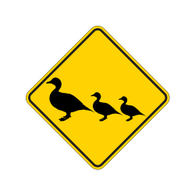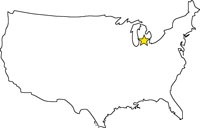Slow Down Signs
14th Dec 2017
Putting speed limits in place is critical for the safety of drivers, road users and pedestrians in the USA. The Manual on Uniform Traffic Control Devices - or MUTCD - sets out a universally accepted system of signs to help drivers stay informed of the speed they should be using at any given moment.
The proper deployment of these signs along America's roads makes it easier for law enforcement officers to ensure that this speed limit is being adhered to. Signs instructing drivers to slow down feature across the MUTCD's R, S and W Series, with some regional variations on each.
We've covered these signs below, explaining what you can expect and outlining what each sign means in practice.
MUTCD's Adoption Across the United States
The MUTCD was designed to provide universal guidance for drivers across America, and a standardized set of signals to ensure that drivers could recognize what was required of them wherever they were in the country.
The project has been successful to an extent, and there is broad standardization across the whole country. However, eight states have rejected the national MUTCD in favor of their own state MUTCD. These are California, Utah, Texas, Missouri, Minnesota, Michigan, Indiana, Ohio, Maryland and Delaware.
Of the remaining 42 states, roughly half utilize the standardized national MUTCD, while the other half utilize the national MUTCD with a supplement which covers the specifics of their own state.
In 1995, the federal government removed the 55mph National Maximum Speed Limit from America's roads, instead leaving it up to state governments to set the speed limits within their own jurisdictions. This has led to additional problems with standardization, as similar roads in different states may have differing limits.
However, for the most part, the signage you will see as you drive across America does adhere to the standards laid out in the manual. It is only that the rules governing different states may not be the same.
The MUTCD's Slow Down Signs
R2 Series: Speed Limit Signs
The R Series of the MUTCD are regulatory signs designed to control movement of traffic on the road. The familiar R2 signs are speed limit signs, displaying a numerical value in miles per hour, often with further detail provided by written instructions.
R4 Series: Controlling Movement on the Road
The R4 Series is designed to provide general controls to traffic flow. There are many signs in this series, most including written instructions. Many of these signs require drivers to slow down.
S Series: School Area Signs
The S Series of the MUTCD is devoted to rules and regulations for school areas, covering the function of both the R and W series in these areas. School warning signs are required to include fluorescent green background coloring.
W1 Series: Curves in Road
The first of the MUTCD warning signs series, W1 signs use arrows to represent curves in the road, often with a recommended speed value included in the sign's design.
W2 Series: Intersections and Cross Roads
The W2 Series warns drivers about approaching intersections and crossroads. These road features are represented using blocks and arrows.
W3 Series: Advance Warning
The W3 Series informs drivers of a change in traffic regulation ahead. This is represented visually, using arrows to represent where the change will take place, or with written instructions.
W7 Series: Hills
Visual representations of hills and gradients show drivers what they can expect up ahead. There may be a speed recommendation on the sign also.
W8 Series: Condition of Road
When the condition of the road is due to change, drivers will be warned of this change by a sign in the W8 Series. These signs usually have written instructions describing the change.
W11 Series: Crossing
In some areas, it may be common to see animals, equipment, or other vehicles crossing the road. The W11 Series of signs warns drivers of this, usually with a visual representation of what they should look out for.
Warning Signs for Individual States - Supplementary to W11
Many states have their own signs which provide further information on signs in the W11 Series. These signs may include written information on what the driver can expect, or may simply provide a different visual representation.
W13 Series: Speed Warnings
While speed limits generally stay the same along any given stretch of road, there are instances when this limit will change. This information is delivered by signs from the W13 Series, which display the new speed limit as well as written information regarding the change.
W15: Playgrounds
The W15 Series warns drivers that there is a playground nearby, and so children may be crossing the road. The playground is represented by a picture of two children on a seesaw.
W17 Series: Speed Humps
The W17 Series is designed to accompany speed humps and other traffic calming measures, helping drivers to slow down in time. The national MUTCD only offers a single sign in this series; a standard warning sign with the words "Speed Hump". However, many individual states have their own variations.
W20 Series: Working Areas
If there are road crews working up ahead, drivers will need to reduce their speed. The W20 Series of signs gives drivers information on this so that they can act accordingly, remaining safe themselves and also protecting the safety of any road crew personnel.
W21 Series: Road Work Related
Often conflated with the W20 Series, the W21 Series of Road Work Related signs is, in fact, a little different. The W21 Series refers to debris and other hazards which may be produced by road crews on a temporary basis, informing drivers with visual representations or with written instructions.
W23 Series: Slow Traffic
Certain areas of the American road system are slower than others, either due to heavy traffic at certain times of the day, or the potential for hazards on and around the roadway. Drivers are informed of possible changes in traffic speed via the W23 Series of signs.
In many cases, these signs will be orange in color, demonstrating that they are of a temporary nature, and can be deployed at any moment. There are many regional variations of signs in the W23 Series, reflecting the myriad factors that cause traffic to slow.




